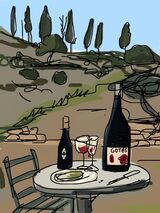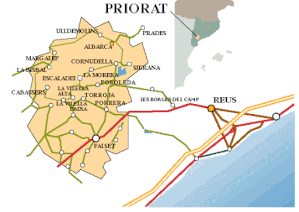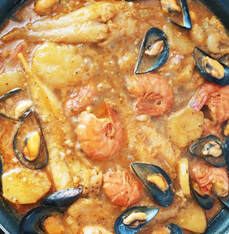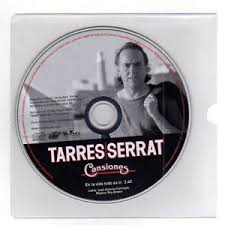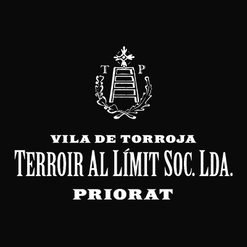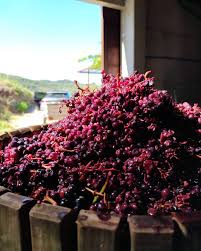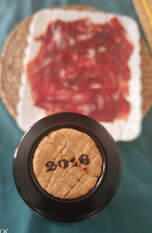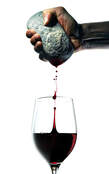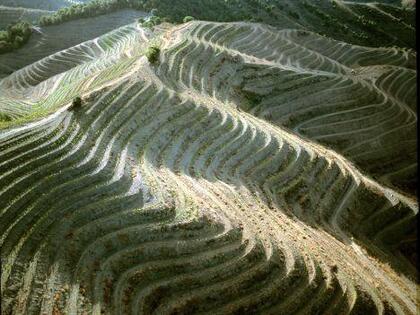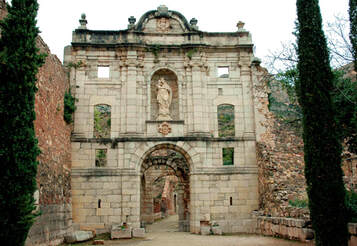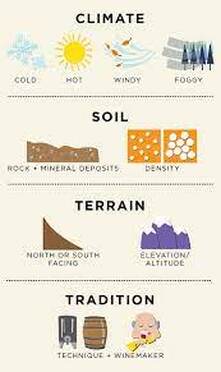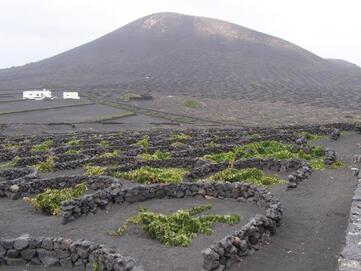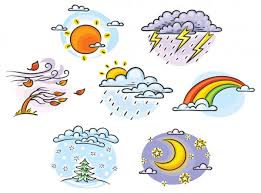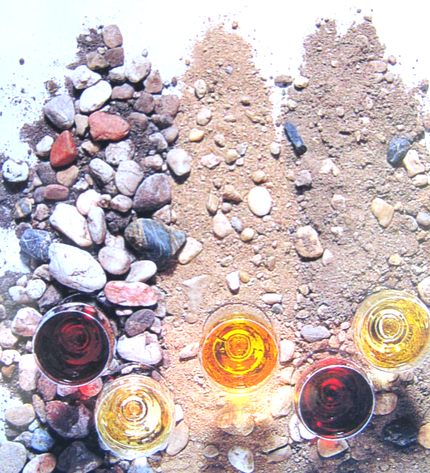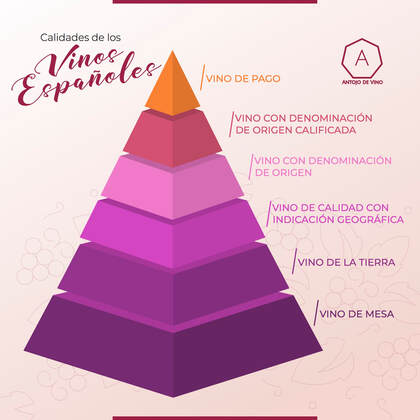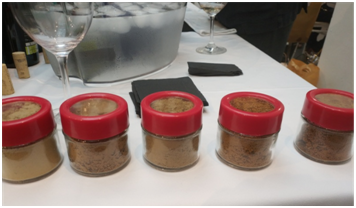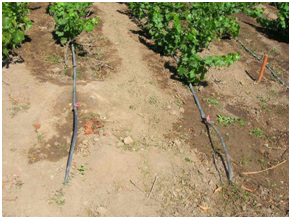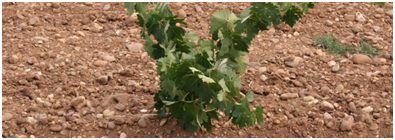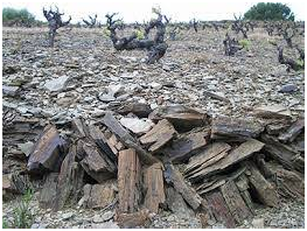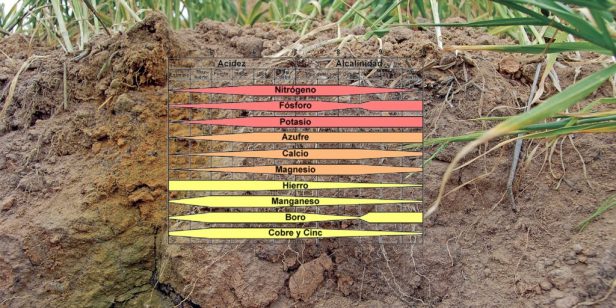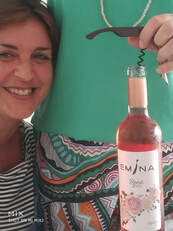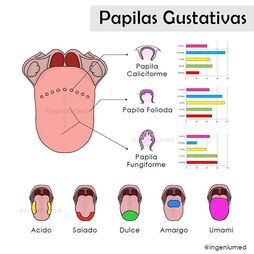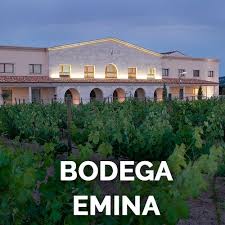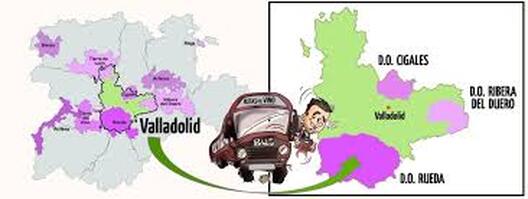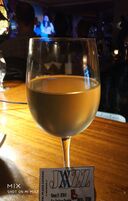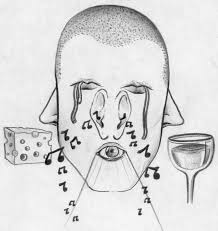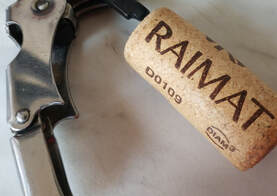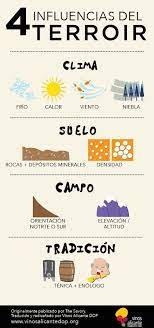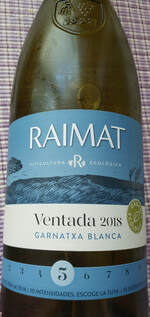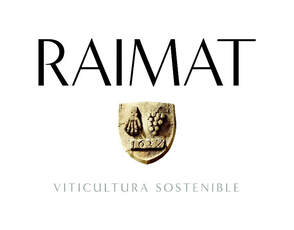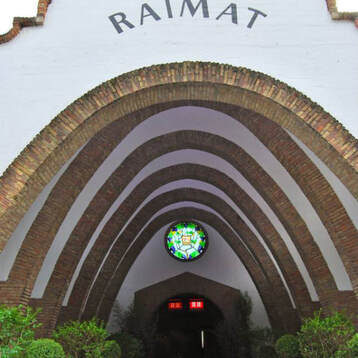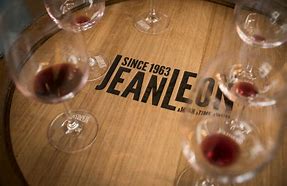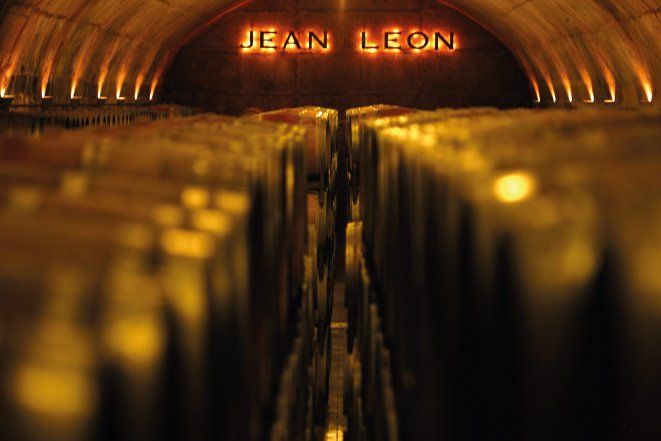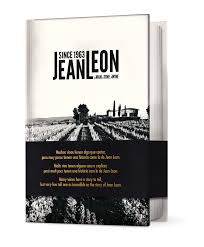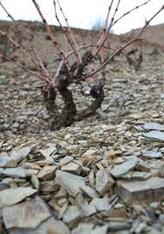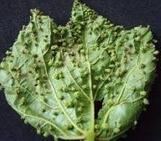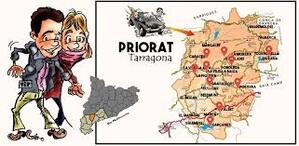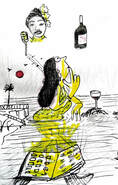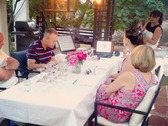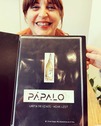|
As its name suggests, Vi de la vila de Torroja is a red wine made with grapes harvested around the town of Torroja (Tarragona). In this case, unlike what happens with the most exceptional cuvées from Terroir al Límit, village wine is made with two different varieties: Garnacha and Cariñena, and interprets two different soils: slate and clay. DO. PRIORAT. TERROIR AL LIMIT SOC. LDA. 93 Parker points. The Terroir al Límit winery has its own old vineyards, cultivated on slopes, with vines from 50 to 100 years old, working with autochthonous varieties and with biodynamic practices. The philosophy of the winery is based on the production of wines with character that subtly show us in an elegant and fresh way, the unique terroir of Priorat. A history of old and extreme vines, located in small plots and caressed by the Mediterranean climate and others not so old, grown on trellises. After a traditional elaboration, Torroja Vi la de la Vila undergoes an aging of 12 months in French oak foudres of second wine (Foudres are large capacity vats that, thanks to their size, reduce the contact of the wine with the wood, allowing the aging to continue without adding too many tannins and toasted aromas to the wine) This bottle of wine has a wait of several months to be uncorked and shared, an unexpected and precious gift that arousing a lot of curiosity and looking for the right moment, did not disappoint. It was seducing us little by little, very gracefully.  Subtle and slender red, suggestive ripe plum color and long tears. Very colored and clean cork and her dress with low layer. In the NOSE with aromas of liquorice, herbs, almonds and that pink pepper that multiplies with the heat of the cheeks. In PALATE it is fresh and juicy at the same time, round and expressive. Its texture is silky, reminiscent and inspiring of Bourgogne wines thanks to its very delicate tannins ... Achieved acidity that allows it to be vigorous without overwhelming. The wood is present, but it does not stand out at all and its warmth shows serenity. The finale is long and personal, as a young fighter and innovative spirit. It is recommended to open one hour in advance before serving or use an aerator. Excellent save. It is the ideal wine to begin in the philosophy of Terroir ... Although we do not perceive the expected mineral / slate touch ... We could feel its excellence. It pairs well with a Mediterranean diet, famous for its dishes with a pure and authentic flavor, harmonious without hiding the authentic character of the land and the sea, so we tried an ibérico ham (acorn-fed), Payoyo goat cheese, blue cream cheese and they accompanied well. We continue to taste with an orange duck pate and we miss that it did not have that “hunting touch”… But the star dish was a rockfish “peix suquet” which thanks to its sauce intensified the notes of almond and pink pepper. And musically speaking, we also opted for something genuine and Catalan such as Serrat and his palindrome Tarres. El Priorat is the second qualified denomination of origin in Spain after Rioja and is probably one of the areas where the immensity is best palpable... El Priorat (Tarragona) is a mystical land, of great wines, which were born in the light of meditation and prayer fostered by a monastic foundation that gave the region its name and is responsible that the word Priorat means wine and excellence. Terroir al Límit is a winery initially formed by two friends: Eben Sadie, from South Africa, where he also produces wine, and Dominik Huber, from Germany. Later he participates and joins the Jaume Sabaté project. A project as inspired as it is risky, totally focused on the vineyard, recovering traditional production practices and reducing the role of wood to a minimum The winery works with the intention to rescue the spirit of the wines as they were made before the so-called Priorat revolution. They seek the minimum intervention and try to ensure that the consumer gets the maximum expression of the Garnacha and Cariñena in each bottle that is uncorked. French philosophy applied to the terroir and distinguishing between village wine (slightly anticipating the official zoning of the region and the creation of the ‘vi de vila’ category), ‘coster wine’ and high altitude wine that would be the equivalent of ‘grand cru’; clear preference for Cariñena and Garnacha better that does not come from slate soils; excessive ripening is not sought and it is harvested rather early; Fermentation is carried out with stalks (lately it is removed before it is completely finished) in open plastic vats and the wood is limited to the minimum expression, favouring large containers and especially foudres. "We don't want to make up anything," says Dominik A. Huber of his wines. "If you believe in your territory and your land, you don't need a barrel." Of course, it can be considered an almost sacrilegious statement in the country that devotes the most to wood. But we are in Priorat, probably the region that concentrates the largest number of wine visionaries and romantics, and the small project by the German Huber is a complete departure from what had been done so far in the area. As Huber affirms, “it can be a unique experience to drink a special wine that really thrills you and that has the ability to transport you to a certain terroir”. And there is no doubt that Priorat is full of impressive and exciting landscapes: a labyrinth of mountains, endless curves and old vines planted on steep slopes on slate soils (the so-called 'llicorella') 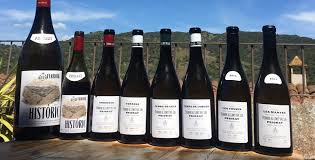 Mystical legends The legend details that the order sent some monks to find the most suitable place for their needs. During this time they met a shepherd who explained to them that in his dreams he saw angels ascending to heaven by stairs supported by the stump of a pine tree that was in the place where he led his flocks to graze. This geography, as beautiful as it is full of hardness, already powerfully attracted the Carthusian monks who, in the 12th century, saw a stairway to heaven in the rocky Montsant mountain range, settled at its feet and notably promoted the cultivation of the vineyard.The monks interpreted it as a sign from God and there they built a small cloister that would be the origin of the Charterhouse of Santa Maria de Scala Dei, which means "stairway to God." It was an expansion center for other religious foundations and had three cloisters and up to 30 cells. The Carthusian monastery was a fundamental promoter of vine cultivation in the region that currently makes up the «Denomination of Origin Qualified Priory». Scala Dei was a monastery founded in the 12th century, considered to be the first Carthusian monastery and the first monastery of the order of San Bruno in the Iberian Peninsula. It dates back to the year 1194, in which King Alfonso II the Chaste donated the lands to the Order of the Carthusians to build a monastery.
0 Comentarios
Como su propio nombre indica, Vi de la vila de Torroja es un tinto elaborado con uvas vendimiadas en los alrededores del pueblo de Torroja (Tarragona). En este caso, a diferencia de lo que sucede con las cuvées más excepcionales de Terroir al Límit, vino de pueblo se elabora con dos variedades distintas: Garnacha y Cariñena, e interpreta dos suelos distintos: pizarra y arcilla. D.O. PRIORAT. TERROIR AL LIMIT SOC. LDA. 93 puntos Parker. 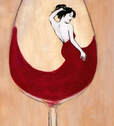 La bodega Terroir al Límit dispone de viñedos propios, viejos cultivados en laderas, con cepas de entre 50 y 100 años de edad, trabajando con las variedades autóctonas y con prácticas biodinámicas. La filosofía de la bodega se basa en la producción de vinos con carácter que nos muestran sutilmente de una forma elegante y fresca el terroir único del Priorat. Una historia de viñas viejas entre 50 y 110 años, extremas, situadas en pequeñas parcelas y acariciadas por el clima mediterráneo y otras no tan antiguas, cultivadas en espaldera. Después de una elaboración tradicional, Torroja Vi la de la Vila pasa por una crianza de 12 meses en foudres de roble francés de segundo vino (Los foudres son tinas de gran capacidad que, gracias a su tamaño, reducen el contacto del vino con la madera, permitiendo continuar la crianza sin añadir demasiados taninos y aromas tostados al vino) Esta botella de vino, tiene una espera de varios meses para ser descorchada y compartida, un inesperado y preciado regalo que despertando mucha curiosidad y buscando el momento adecuado, no defraudó. Nos fue ganando poco a poco, muy grácilmente. Tinto sutil y esbelto, de sugerente color ciruela madura y lágrima larga. Su corcho muy coloreado y limpio, su vestido, de capa baja. En NARIZ con aromas de regaliz, herbales, de almendras y esa pimienta rosa que se multiplica con el calor de las mejillas. En PALADAR es fresco y jugoso a la par, redondo y expresivo. Su textura es sedosa, recuerda e inspira a los vinos de Borgoña gracias a unos taninos finísimos… Lograda acidez que le permite mostrarse vigoroso sin abrumar. La madera se intuye, pero no resalta en absoluto y su calidez demuestra serenidad. Su final es largo y personal como un espíritu joven, luchador e innovador. Se recomienda abrir una hora antes de servir o utilizar un aireador. Excelente guarda. Es el vino ideal para iniciarse en la filosofía del Terroir…Aunque no percibimos el esperado toque mineral/pizarroso…Sí , su excelencia.
 Y musicalmente hablando, pues nos decantamos también por algo genuino y catalán como puede ser Serrat y su palíndromo Tarres. El Priorat es la segunda denominación de origen calificada de España tras Rioja y es probablemente una de las zonas en donde mejor se palpa la inmensidad ... El Priorat (Tarragona) es una tierra mística, de grandes vinos, que nacieron a la luz del recogimiento y de la oración propiciados por una fundación monacal que dio nombre a la comarca y que fue la responsable de que la palabra Priorat supiera a vino y a excelencia. Terroir al Límit es una bodega formada inicialmente por dos amigos: Eben Sadie, de Sudáfrica, donde él también produce vino, y Dominik Huber, alemán. Posteriormente participa y se añade al proyecto Jaume Sabaté. Un proyecto tan inspirado como arriesgado, totalmente centrado en la viña, recuperando prácticas de elaboración tradicionales y reduciendo el protagonismo de la madera al mínimo. La bodega trabaja con la intención de rescatar el espíritu de los vinos tal y como se elaboraban antes de la conocida como revolución del Priorat. Buscan la mínima intervención y tratar de que al consumidor le llegue la máxima expresión de la Garnacha y la Cariñena en cada botella que se descorcha. Filosofía francesa aplicada al terruño y distinguiendo entre vino de pueblo (anticipándose ligeramente a la zonificación oficial de la región y a la creación de la categoría vi de vila), vino de coster y vino de altura que sería el equivalente al grand cru ; preferencia clara por la Cariñena y Garnacha mejor que no provenga de suelos de pizarra; no se buscan maduraciones excesivas y se vendimia de forma más bien temprana; la fermentación se realiza con raspón (últimamente se retira antes de que finalice por completo) en cubas abiertas de plástico y la madera se limita a la mínima expresión, favoreciendo los envases de gran tamaño y en especial los foudres. "No queremos maquillar nada", dice Dominik A. Huber de sus vinos. "Si crees en tu territorio y en tu terruño no necesitas una barrica". Desde luego, puede considerarse una afirmación casi sacrílega en el país que más devoción presta a la madera. Pero estamos en el Priorat, probablemente la región que concentra el mayor número de visionarios y románticos del vino, y el pequeño proyecto del alemán Huber es un punto y aparte con respecto a lo que se había hecho hasta ahora en la zona. Como afirma Huber, “puede ser una experiencia única beber un vino especial que realmente te conmueve y que tiene la capacidad de transportarte a un cierto terroir”. Y qué duda cabe que el Priorat está lleno de paisajes impactantes y que emocionan: un laberinto de montañas, curvas sin fin y viejas viñas plantadas en pronunciadas laderas sobre suelos de pizarra (la llamada 'llicorella'). 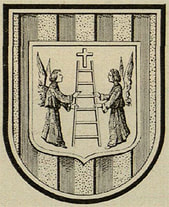 Leyendas místicas La leyenda detalla que la orden envió unos monjes a buscar el lugar más adecuado a sus necesidades. Durante este tiempo encontraron un pastor que les explicó que en sueños veía a unos ángeles que subían al cielo por unas escaleras apoyadas en la cepa de un pino que había en el lugar donde él llevaba a sus rebaños a pastar. Esta geografía tan bella como llena de dureza ya atrajo poderosamente a los monjes cartujos que, en el siglo XII, vieron en la rocosa sierra del Montsant una escalera hacia el cielo, se asentaron a sus pies e impulsaron notablemente el cultivo de la viña. Los monjes lo interpretaron como una señal de Dios y allí mismo construyeron un pequeño claustro que sería el origen de la Cartuja de Santa Maria de Scala Dei, que significa «escalera hacia Dios”. Fue un centro de expansión para otras fundaciones religiosas y llegó a tener tres claustros y hasta 30 celdas. La cartuja fue impulsora fundamental del cultivo de la vid en la región que actualmente conforma la «Denominación de Origen Calificada Priorato». Scala Dei fue un monasterio fundado en el siglo XII, considerado como la primera cartuja y el primer cenobio de la orden de San Bruno en la Península Ibérica. Se remonta al año 1194, en el que el rey Alfonso II el Casto donó las tierras a la Orden de los Cartujos para que construyeran un monasterio. Mis Encuentros con el Vino. Irene Sayas.
 As a result of reading this surprising book "COMETIERRA" (EARTH-EATER) by Dolores Reyes, my mind began to be aware of earth and all the connections with it, mystical, metaphysical, mysterious and ancestral ... And from there, focusing on the subject wine / viticulture, this article came up. "Terroir" is a French term. Literally, it can be defined as a territory, a concrete, tangible and mappable space, which can be determined through various geological and geographical factors. When we refer to terroir in the world of wine, it is a slightly more romantic definition. It is a compendium between soil, climate, environment and other geographical characteristics, which give personality to that grape that has been grown there. The land and climate where the vines are grown are considered to impart unique characteristics to the fruits that could not be imparted by any other region of the world. In Spanish it is usually translated as "terruño", defining something deeper and at the same time more extensive. Terroir is the expression of a set of natural factors derived from the soil, topography and microclimate, all of them dedicated to the cultivation of the vineyard and under the action of the hand of man, the viticulturist is a very important part of the terroir, because throughout the years of cultivation of the vineyard, from the preparation of the land, to the successive plantations and start-ups, as well as the application of various cultivation systems and technologies, intervenes in such a way that makes a vineyard differentiate itself from those located in its environment and therefore also the wines made from it. The first to notice the deterioration of the meaning of “terroir” have been the Bourgogne makers. Bourgogne is known for its extraordinary mosaic of small parcels with unique and excellent characteristics for making wine. They are considered the best lands in the world, the "kings of terroir". However, they have looked for a new term and have developed a new concept to define their plots, "climat". Climat is a vineyard plot, carefully defined and known by name for centuries, which has its history and benefits from particular climatic and geological conditions. Each wine belonging to a “climat” has its own taste and its place within the Crus hierarchy (regional, town, Premier Cru or Grand Cru denomination). In Spain, they take the name of "Vinos de Pago" or "Vinos de Finca". One of the most influential aspects for making a wine is to choose the type of soil where the vine is grown. Factors such as aromas, flavours and the character of the wine grown in that land will depend on the characteristics of the soil where the plant grows. The incidence of the nature and characteristics of the cultivation soil on the quality of the wines is widely discussed by different authors and experts in the field. In many new areas or countries and regions starting in cultivation of vine, they tend to ensure that the soil, although important, is a purely secondary factor in relation to climate and variety, whereas in many of the famous regions of Europe the belief that a particular soil has a lot to do with local success is firm. There is no ideal terroir that can be applied to all vine varieties. The soil should not be very rich, so that the vine is not too vigorous and the grape not too large. This doesn´t mean that the soil should be lacking: balance is always important. By its nature, the terroir must be able to contribute certain organoleptic characteristics to the wine. Its poverty is a quality element of the wine, since it favours limited yields that avoid the dilution of the colorants, aromas and aroma components. Although all attempts to prove that there are substances that pass from the soil to the grape and to the wine have failed, it is likely that the nature of the soil determines the character of the wine. All these elements present in the soil, influence the final result of the wine. A correct combination of all of them, accompanied by the grape variety, the climate or the meteorology, will turn our grapes into differentiated wines depending on the type of soil. 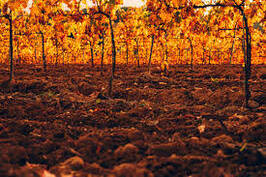 The characteristics expected in the wines according to the type of soil of where they come from are: Sandy soils: -Sand : Bright, soft, slightly alcoholic and aromatic wines. They are usually found in: Rias Baixas, Ribeiro, Ribeira Sacra, Wines of Madrid ... They are soils with a low content of silt and clay, and that generally do not have a much defined structure as they lack binding elements. In these lands there is very little cohesion, the water is not retained too much and the light penetrates easily, so they are usually very dry soils at hot times of the year. In this type of soils, winegrowers need to be very aware that the vine receives all the nutrients it needs and the ripening of the grape, because in this type of soil, the vineyards advance maturation a few days due to the heat accumulated in the soil due to penetrated light. 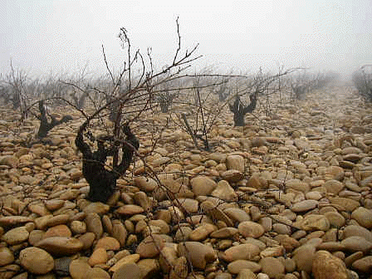 Clay soils: -Clay: slightly delicate and tannic wines -Limestone-clays: Delicate, elegant wines, little alcoholic -Ferruginous-clays: Alcoholic wines, high color They are usually found in: Rioja, Ribera del Duero, Calatayud, Alicante, Cigales, Somontano ... This type of ground is stronger; it has a higher silt and clay content than in sandy soils and they usually contain binding elements that prevent light from penetrating easily, so they are colder soils that delay somewhat more vine maturation. Stony soils: -Limestone-sand: Alcoholic wines, with mineral and dry aromas -Limestone: Wines with body, aging. They are usually found in: Galicia, Madrid, Méntrida…. In this type of soil, thick edges predominate on the surface, which gives freshness to the vineyard by preventing the light from penetrating deeply; therefore, they are very cold soils that give the vineyard great quality. Loamy soils: . Produces delicate and expressive wines They are usually found in: Serranía de Ronda, Almería, Córdoba ... Soils that have a balanced composition of clay, sand and silt, but with a higher proportion of the former, which allows good permeability and retention of water and nutrients. It is a soil that has a relatively uniform mixture, in quantitative terms, of the three separate textuals. Loamy-clay texture. It is a soil that presents a lot of clay but also has silt and sand, presenting greater cohesion. They are a very balanced type of terrain, a hybrid between stony and clayey ones. They have a good texture and fertility.  Slate soils: They are poor soils, with little organic matter, characteristic for expressing mineral aromas in the wines. In the Priorat (Catalonia) they call the disintegration of the slate in the form of sheets "llicorella". Where to find it: Priorat, Arribes de Duero, Ribeira Sacra, Tenerife, El Bierzo ... Volcanic soils: Where to find it: Tenerife, Priorat... Wine quality: Wines with smoky and mineral aromas. It filters the water very well, retains the sun's rays. In general we can say that no soil achieves all 100% of the characteristics mentioned above, but usually a combination depending on factors like the content silt or clay soil, drainage, depth, pH, salinity …etc. It is also important that we look at the texture of the soil, where we will mainly differentiate between compact soil and stony soil. A compact soil is not very appropriate for the cultivation of the vine, since it is not very permeable and does not absorb water correctly; on the contrary, the stony soil is perfect for the vineyard since it favours the growth of the vine by having excellent drainage and permeability. Other important aspects are the colour of the earth, which influences heating the ground: the clearer it is more freshness brings to the plant as it absorbs less extent rays of the sun to the dark earth, also the slope of the ground, a flat land is waterlogged more easily, while a pending risk eroding the slopes, however, can create special microclimates for the vineyard, more or less exposure to the sun, good drainage and little erosion. Another key factor that we have to consider is the mineral composition of the soil, as the minerals in it, bring certain characteristics to the wine, and are some of these that help make the character of the wine. Iron improves the blue tones in red wines, a soil rich in calcium will make our wines more elegant, since it influences the thickness of the skin and therefore the accumulation of aromas and pigments. Magnesium, for its part, contributes to harmony; silica provides graduation and finesse, while clay is responsible for structure and consistency. The climate affects important factors such as the temperature and the humidity of the soil, since the temperature and the precipitation will modify to a greater or lesser amount of minerals present and their chemical composition. Therefore, the climate affects endophogenesis, since thanks to rainfall there will be more or less biological and chemical activity on the soil. In addition, it is important to note that temperature is probably the most important climatic element when taking into account for the full development of the vine and the ripening of the grape, since temperatures that are too high for a long time could cause an increase in the grape sugars and consequently overripening, which is not suitable for making a quality wine. Irene Sayas 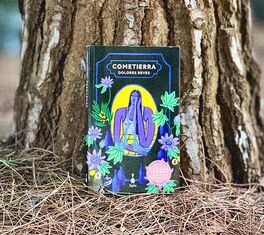 A raíz de leer este sorprendente libro “COMETIERRA” de Dolores Reyes, mi mente empezó a ser consciente de la tierra y todas las conexiones con ella habidas y por haber, místicas, metafísicas, misteriosas y ancestrales…Y de ahí, enfocándolo en el tema vinícola/vitícola, surgió este artículo. «Terroir» es un término francés. Literalmente, se puede definir como un territorio, un espacio concreto, tangible y cartografiable, que puede ser determinado a través de diversos factores geológicos y geográficos. Cuando nos referimos al terroir en el mundo del vino, es una definición un poco más romántica. Es aquel compendio entre suelo, clima, ambiente y otras características geográficas, que le dan la personalidad a esa uva que ha sido cultivada allí. Se considera que la tierra y el clima en donde se cultivan las vides, imparten características únicas a los frutos, que no podrían ser impartidas por cualquier otra región del mundo. En español suele traducirse como "terruño", definiendo algo más profundo y a la vez más extenso. Terruño es la expresión de un conjunto de factores naturales derivados del suelo, topografía y microclima, todos ellos dedicados al cultivo del viñedo y bajo la acción de la mano del hombre, el viticultor es una parte muy importante del terruño, pues a lo largo de los años de cultivo del viñedo, desde la preparación del terreno, hasta las sucesivas plantaciones y arranques, así como la aplicación de diversos sistemas y tecnologías de cultivo, interviene de tal manera que hace que un viñedo se vaya diferenciando de los situados en su entorno y por lo tanto también los vinos elaborados a partir del mismo. Los primeros en darse cuenta del deterioro del significado de “terroir” han sido los elaboradores de Borgoña. Borgoña es conocida por su extraordinario mosaico de pequeñas parcelas con características únicas y excelentes para elaborar vino. Son considerados los mejores terrenos del mundo, los “reyes del terroir”. Sin embargo han buscado un nuevo término y han elaborado un nuevo concepto para definir sus parcelas, “climat”. Climat,es una parcela de viña, cuidadosamente delimitada y conocida por su nombre durante siglos, que posee su historia y se beneficia de condiciones climáticas y geológicas particulares. Cada vino perteneciente a un “climat” tiene un gusto propio y su plaza dentro de la jerarquía de Crus (denominación regional, de pueblo, Premier Cru o Grand Cru). En España, toman el nombre de “Vinos de Pago” o “Vinos de Finca”. Uno de los aspectos más influyentes para la elaboración de un vino es la elección del tipo de suelo donde se cultiva la vid. De las características del suelo donde se desarrolla la planta, dependerán factores como, aromas, sabores y el carácter propio del vino cultivado en esa tierra. La incidencia de la naturaleza y características del suelo de cultivo sobre la calidad de los vinos es ampliamente discutida por los distintos autores y expertos en la materia. En muchas zonas nuevas o países y regiones jóvenes en el cultivo de la vid, tienden a asegurar que el suelo, aunque importante, es un factor puramente secundario en relación con el clima y la variedad, mientras que en muchas de las regiones famosas de Europa es firme la creencia de que un suelo particular tiene mucho que ver con el éxito local. No existe un terruño ideal que pueda aplicarse a todas las variedades de vid. El suelo no debe ser muy rico, para que la vid no sea demasiado vigorosa y la uva no demasiado grande. Tampoco esto significa que el suelo deba presentar carencias: el equilibrio es siempre importante. Por su naturaleza, el terruño debe poder aportar ciertos caracteres organolépticos al vino. Su pobreza es un elemento de calidad del vino, pues favorece rendimientos limitados que evitan la dilución de los colorantes, de los aromas y de los componentes del aroma. Aunque todos los intentos orientados a probar que hay sustancias que pasan del suelo a la uva y al vino han fracasado, es probable que la naturaleza del suelo marque el carácter del vino. 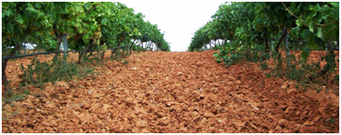 Todos estos elementos presentes en el suelo, influyen en el resultado final del vino. Una combinación correcta de todos ellos, acompañada de la variedad de uva, el clima o la meteorología, convertirá nuestras uvas en vinos diferenciados en función del tipo de suelo. Las características esperadas en los vinos de acuerdo con el tipo de suelo de que proceden son: Suelos arenosos: -Arenas: Vinos brillantes, suaves, poco alcohólicos y aromáticos. Suelen encontrarse en : Rias Baixas, Ribeiro, Ribera Sacra, Vinos de Madrid… Son suelos con un bajo contenido en limo y arcilla, y que por lo general, no tienen una estructura demasiado definida al carecer de elementos aglutinantes. En estos terrenos hay muy poca cohesión, el agua no se retiene demasiado y la luz penetra fácilmente, por lo que suelen ser suelos muy secos en épocas calurosas del año. En este tipo de suelos los viticultores necesitan estar muy pendientes de que la vid recibe todos los nutrientes que necesita y de la maduración de la uva, pues en este tipo de suelos, los viñedos adelantan unos días la maduración por el calor acumulado en el suelo debido a la luz penetrada. Suelos arcillosos: -Arcillas: Vinos poco finos y tánicos -Arcillas-calizas: Vinos finos, elegantes, poco alcohólicos -Arcillas-ferruginosas: Vinos alcohólicos, color alto Suelen encontrarse en : Rioja, Ribera del Duero, Calatayud, Alicante, Cigales, Somontano… Este tipo de terreno es más fuerte; tiene un contenido en limo y arcilla mayor que en los suelos arenosos y suelen contener elementos aglutinantes que impiden a la luz penetrar con facilidad, por lo que son suelos más fríos que retardan algo más la maduración de la vid. 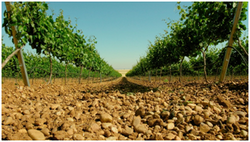 Suelos pedregosos: -Arenas-caliza: Vinos alcohólicos , con aromas minerales y secos -Caliza: Vinos con cuerpo, crianza Suelen encontrarse en : Galicia, Madrid, Méntrida…. En este tipo de suelo predominan los cantos gruesos en la superficie, lo que da frescor al viñedo al impedir que la luz penetre profundamente, por eso, son suelos muy fríos que le otorgan una gran calidad al viñedo. Suelos francos: Da vinos finos y expresivos. Suelen encontrarse en : Serranía de Ronda, Almería, Córdoba… Suelos que gozan de una composición equilibrada de arcilla, arena y limo, pero con una mayor proporción de la primera, lo que permite buena permeabilidad y retención de agua y nutrientes Es un suelo que tiene una mezcla relativamente uniforme, en términos cuantitativos, de los tres separados textuales. Textura Franco-Arcillosa. Es un suelo que presenta bastante arcilla pero que cuenta también con limo y arena. Presenta mayor cohesión. Son un tipo de terreno muy equilibrado, híbrido entre los pedregosos y los arcillosos. Presentan una buena textura y fertilidad. Suelos pizarrosos: Son suelos pobres, con poca materia orgánica, característicos por expresar en los vinos aromas minerales. En el Priorato (Cataluña) llaman ‘llicorella’ a la desintegración de la pizarra en forma de láminas. Dónde encontrarlo: Priorat, Arribes de Duero, Ribeira Sacra, Tenerife, El Bierzo… Suelos volcánicos: Dónde encontrarlo: Tenerife, Priorat… Calidad del vino: Vinos con aromas ahumados y minerales. Filtra muy bien el agua, retiene los rayos de sol.  En líneas generales se puede decir que, ningún suelo cumple al 100% todas las características anteriormente citadas, sino que suelen ser una combinación dependiendo de factores como el contenido en limo o arcilla del suelo, el drenaje, la profundidad, el PH, la salinidad…etc. Es importante también que nos fijemos en la textura del suelo, donde diferenciaremos principalmente entre suelo compacto y suelo pedregoso. Un suelo compacto es poco apropiado para el cultivo de la vid, ya que es poco permeable y no absorbe bien el agua, por el contrario el suelo pedregoso es perfecto para la viña ya que favorece el crecimiento de la vid al poseer un excelente drenaje y permeabilidad. Otros aspectos importantes son el color de la tierra, que influye en el calentamiento del suelo: cuanto más clara sea más frescura aporta a la planta ya que absorbe en menor medida los rayos del sol que la tierra oscura, y la inclinación del terreno, un terreno llano se encharcará con más facilidad, mientras que una pendiente corre el riesgo de erosionarse en las laderas, sin embargo, se pueden crear microclimas especiales para el viñedo, con mayor o menor exposición al sol, buen drenaje y poca erosión. Otro factor fundamental en el que tenemos que detenernos es la composición mineral del suelo, ya que los minerales presentes en él, aportan unas características determinadas al vino, y son algunas de éstas las que ayudan a marcar el carácter propio del vino. El hierro mejora los tonos azules en los vinos tintos, una tierra rica en calcio hará que nuestros vinos sean más elegantes, ya que influye en el grosor de la piel y por tanto en la acumulación de aromas y pigmentos. El magnesio, por su parte, contribuye a la armonía el sílice aporta graduación y finura, mientras que la arcilla, es la responsable de la estructura y la consistencia.
El clima afecta a factores importantes como lo son la temperatura y la humedad del suelo, pues la temperatura y la precipitación modificarán en mayor o menor medida los minerales presentes y su composición química. Por lo tanto, el clima afecta a la endofogénesis, ya que gracias a las precipitaciones habrá mayor o menor actividad biológica y química sobre el suelo. Además, es importante señalar que la temperatura es probablemente el elemento climatológico más importante a la hora de tener en cuenta para el pleno desarrollo de la vid y la maduración de la uva, pues unas temperaturas demasiado elevadas durante mucho tiempo podrían producir un aumento en los azúcares de la uva y en consecuencia una sobremaduración, lo cual no es apto para elaborar un vino de calidad. Vino rosado pálido, procedente de parcelas propias de la denominación de origen Cigales, de Bodega Emina, perteneciente al Grupo Matarromera. Emina en latín significa : amada y en su día, una hemina era la medida límite que tenían los monjes para beber al día, recogemos esta palabra como pasión al mundo del vino, respetando la cultura y nuestro pasado. Su origen está en una parcela caliza en Quintanilla de Trigueros, conocida como el Terrón Blanco, provincia de Valladolid. Este viñedo plantado en espaldera, se encuentra a 855 metros de altitud, lo cual favorece la lenta maduración de la uva. Esto unido a una vendimia temprana, mantiene la frescura del vino rosado y contribuye al característico color del mismo. Este viñedo posee uva de las variedades Tempranillo, Cabernet Sauvignon, Merlot y Garnacha entre otras... CATA : La mezcla de variedades tintas y blancas que contiene este vino rosado, consiguen que tengamos en la copa un pale rosé elegante y limpio, aunque para mí no consigue los objetivos de su fama…Y lo siento, pero no he conseguido averiguar, que porcentaje y tipo de uva contiene exactamente… Color rojo aclarado , con suaves reflejos ambarinos, brillante y apetecible. En nariz : Flores blancas y toques minerales (tiza) , me arriesgo a decir que supuestamente puede ser causado por la fermentación alcohólica controlada de la mezcla de variedades tintas y blancas, más que por la mineralidad de su suelo calizo… En paladar, percibimos un desequilibrio entre las sensaciones frescas y frutales de la acidez y la fase aromática que le da cierta complejidad al vino… Vivaz y picante en la punta de la lengua. Así que este matiz da lugar a preguntas, cuestiones y curiosidades que voy a intentar resolver en la siguiente página.  En esta ocasión decidí acompañarlo de un “suquet de peix” rico guiso de rape y marisco con patatas y salsa marinera con almendras, plato tradicional de la gastronomía valenciana, y tuvo un éxito espectacular, debido a su tono algo picante, muy favorecedor para los vinos rosados. Y musicalmente hablando, creo que su maridaje sin duda sería una habanera “La Bella Lola”, en honor a la familia de mi madre y en especial a mi prima Lola. Casi siempre al degustar un vino, nos surge diversidad de opiniones y “controversia” en cuanto a que lo que cada uno percibimos acerca de la acidez o amargor, dulzor, cuerpo…Y eso me encanta! Por eso ahora os intento definir un poco los sabores que reconoce nuestra lengua. La lengua nos da poca información pero muy relevante sobre un vino. Distinguir las características de los vinos requiere de práctica. Cerrando los ojos podremos percibir mejor las características de los vinos. .Acidez : Se reconoce en los mejores vinos por una fuerte sensación de hormigueo en los laterales de la lengua, dejándola áspera, y por provocar irritación en los labios. .Los taninos : El sabor amargo de los taninos se identifica en la parte interior de la boca provocando que la lengua se seque. Además, después de tragar el vino persiste una sensación amarga en la boca. .La dulzura/fruta: La dulzura se determina por la cantidad de azúcar que permanece en los mejores vinos después de que han pasado por el proceso de la fermentación. Pero, ¿Cómo distinguirla? Percibimos la dulzura en la punta de la lengua, lo que provoca que la primera impresión con el vino sea una sensación de hormigueo en la punta de lengua. Muchos de los mejores vinos poseen sabores frutales con notas a fresas, manzanas, peras, moras o arándanos… Este tipo de vinos se suelen confundir con los dulces entre personas con dificultad para diferenciar las características del vino, sin embargo existe un pequeño truco! Mientras que el carácter frutal se percibe con la nariz, tanto en vía nasal como retronasal, el vino dulce se reconoce en la lengua. Por lo tanto, la clave reside en degustar el vino tapándonos la nariz, si el vino ya no tiene el sabor dulce, entonces se trata de un vino afrutado. Si el sabor continúa dulce entonces estás ante un vino dulce afrutado. .Umami : Proviene de la combinación de los términos japoneses umai (うまい) ‘delicioso’ y mi (味) ‘sabor’. Si bien es poco frecuente, algunos prescriptores de vino ya han utilizado este término en sus notas de cata. Es un sabor que no es dulce, salado, amargo o ácido, para muchos indefinible y además no es una percepción subjetiva de alguien capaz definir ese algo tan especial y suculento que satisface al paladar. Estamos hablando del umami, ese quinto sabor tan escurridizo como apreciado que también se manifiesta en el vino para quien es capaz de reconocer la complejidad de determinar la cantidad de glutamato que contiene un vino y señala los procesos de fermentación y crianza como factores fundamentales. Otra forma de describir este sabor sería escoger aromas como minerales, humo, tierra o sabores optimistas. ¿Rosado o clarete? Bajo este mismo titular, Tomás Jurío publicó en 2018 un interesantísimo y más que recomendable artículo en la revista ARGI en el que, tras aleccionar al lector sobre la historia de estos dos tipos de vinos, concluye que, a día de hoy, un rosado y un clarete son exactamente lo mismo “desde el punto de vista legal de designación y elaboración”, ya que el último decreto ley publicado al respecto (1363/2011) no especifica ninguna norma de elaboración ni de composición varietal. El dilema del color. Ahora está de moda el rosa pálido, provenzal, elegante y delicado; el ojo de perdiz y la piel de cebolla. Enfrente, el rosa frambuesa, frutal, intenso, vivo y primario, o lo que es lo mismo, el color del clarete de Cigales de toda la vida. El color tradicional de estos rosados , es más intenso porque antiguamente se tardaba más en prensar la uva y el mosto adquiría más color de los hollejos; eran vinos más intensos y frutales en aromas y sabores. 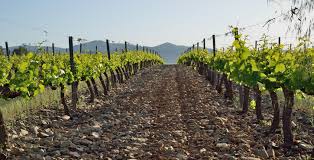 Pale rosé wine, from plots of the Cigales denomination of origin, from Bodega Emina, belonging to the Matarromera Group. Emina in latin means ‘beloved’ and a hemina was once the limit measure that a monk could drink per day, we recovered this word as a contribution to the world of wine, with full respect to ourt culture and tradition. Its origin is in a limestone plot in Quintanilla de Trigueros, known as the Terrón Blanco, in Valladolid province. This trellised vineyard, is located at an altitude of 855 meters, which favors the slow ripening of the grapes. This, together with an early harvest, maintains the freshness of the rosé wine and contributes to its characteristic colour. This vineyard has grapes of the Tempranillo, Cabernet Sauvignon, Merlot and Garnacha varieties among others... TASTING: The mixture of red and white varieties that this rosé wine contains, makes possible for us to enjoy an elegant and clean pale rosé in the glass, although on my opinion, does not achieve the goals of its fame ... And I'm sorry, but I have not been able to find out what percentage and type of grape contains exactly... Lightened red color, with soft amber reflections, bright and appetizing. On the nose: White flowers and mineral touches (chalk), I venture to say that it can supposedly be caused by the controlled alcoholic fermentation of the mixture of red and white varieties, rather than by the minerality of its limestone soil ...On the palate, we perceive an imbalance between the fresh and fruity sensations of acidity and the aromatic phase that gives the wine a certain complexity ... Lively and spicy on the tip of the tongue. So this nuance gives rise to questions, issues and curiosities that I will try to solve on further on. 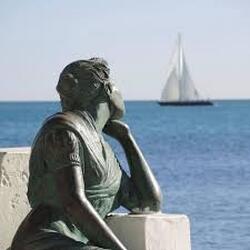 On this occasion I decided to accompany it with a “suquet de peix”, a monkfish and seafood stew of potatoes and marine sauce with almonds, a traditional dish of valencian gastronomy, and it was spectacularly successful, due to its somewhat spicy tone, very appropriate for the rosé wines. And musically speaking, I think their pairing would undoubtedly be a habanera song "La Bella Lola", in honour of my mother's family and especially my cousin Lola. Almost always when tasting a wine, a diversity of opinions and "controversy" arise as to what each of us perceives about acidity or bitterness, sweetness, body ... And I love that! So now I'm trying to define a little the flavour that our language recognizes. The tongue gives us brief, but very relevant information about a wine. To perceive the characteristics of wines requires practice. Closing our eyes helps for a better perception of wines characteristics. Acidity: It is recognized in the best wines by a strong tingle sensation on the sides of the tongue, leaving a rough feeling and by causing irritation to the lips. Tannins: The bitter taste of tannins is identified on the inside of the mouth causing the tongue to dry out. In addition, after swallowing the wine a bitter sensation persists in the mouth. 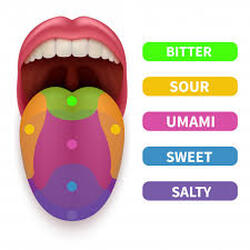 Sweetness / fruit: Sweetness is determined by the amount of sugar that remains in the best wines after they have gone through the fermentation process. But how to distinguish it? We perceive the sweetness on the tip of the tongue, which causes the first impression with the wine to be a tingling sensation on the tip of the tongue. Many of the best wines have fruity flavours with notes of strawberries, apples, pears, blackberries or blueberries ... These types of wines are often confused with sweets among people who have difficulty differentiating the characteristics of the wine, however there is a little trick! While the fruity character is perceived with the nose, both nasal and retro nasal, sweet wine is recognized on the tongue. Therefore, the key lies in tasting the wine by holding our noses, if the wine no longer has the sweet taste, then it is a fruity wine. If the flavour continues sweet that is a fruity sweet wine. Umami: It comes from the combination of the Japanese terms umai (う ま い) ‘delicious’ and my (味) ‘taste’. Although rare, some wine prescribers have already used this term in their tasting notes. It is a flavour that is not sweet, salty, bitter or acid, for many indefinable and it is also not a subjective perception of someone capable of defining that something so special and succulent that satisfies the palate. We are talking about umami, that fifth flavour so elusive as it is appreciated that also manifests itself in wine for those who are able to recognize the complexity of determining the amount of glutamate that a wine contains and points out the fermentation and aging processes as fundamental factors. Another way to describe this flavour would be to choose aromas like mineral, smoke, earth, or upbeat flavours.  Rosé or clarete? Under this same headline, Tomás Jurío published in 2018 a very interesting and highly recommended article in the ARGI magazine in which, after instructing the reader on the history of these two types of wines, he concludes that, today, a rosé and a clarete are exactly the same "from the legal point of view of designation and elaboration", since the last decree law published in this regard (1363/2011) does not specify any norm of elaboration or varietal composition. The color dilemma controversy. Nowadays the pale pink, provencal, elegant and delicate, is in fashion as partridge eye and onion skin are too. Opposite, the raspberry pink, fruity, intense, alive and primary, or what is the same the colour of the clarete of Cigales . The classic colour of these rosés is more intense because in the past it took longer to press the grapes and the must acquire more colour from the skins; those wines were more intense and fruity in aromas and savours. De la misma manera en que establecemos relaciones entre conceptos propios de diferentes sentidos como la vista o el gusto, ¿es posible que podamos relacionar el oído y el olfato? Más concretamente, ¿podríamos "escuchar el vino"? ¿Alguna vez has escuchado que las penas son amargas o que el rojo es el color de la pasión? En esta ocasión quiero hablaros sobre este ameno tema ya que últimamente he recibido noticias de nuevos proyectos e ideas al respecto. Ahí va la mía!! Escuchar música es una de las actividades que más redes neuronales activa en el ser humano; la música pone en acción el sistema límbico, la parte más profunda de nuestro cerebro, donde radican las emociones. Con el potencial de la música y el proceso de descubrir cuales son los timbres, ritmos y armonías que mejor expresan un vino, surge uno de tantos proyectos, Wine Loves Music, basado en la sinestesia de sentidos y con el que cuatro apasionados de la música, el vino y la psicología quieren que los bodegueros agreguen una composición musical única y exclusiva como herramienta de marketing para impactar en su público.  Lo cierto es que siempre se ha escuchado, pero hasta hace poco no le hemos prestado atención. Si recordamos la última vez que compartimos un vino, seguro que la música y la conversación estaban presentes. Sin darnos cuenta, esa música nos afecta a la hora de disfrutar de un vino, y así lo avalan diversos estudios científicos que demuestran que el sonido afecta a como percibimos un olor o un sabor determinado. Lo que hacen en Wine Loves Music es crear la música idónea para la degustación de ese vino. Independientemente de este proyecto que os nombro, entre otros que existen hoy en el mercado, yo personalmente siempre he defendido ese apartado melódico como parte del maridaje del vino, si habéis seguido mi trayectoria de artículos publicados, podéis constatar que así es. También en mis Catas en Esencia, con diversos clientes y en Las Catas Flamencas organizadas por Ventana Abierta, se ha escuchado al vino y el artista nos ha transmitido su mensaje personal. No concibo una degustación de vino sin un acompañamiento musical también, dónde surge la complicidad entre los degustadores o al sugerir la que yo creo conveniente, se crea una comparativa instrumental muy interesante... Al fin y al cabo, las notas de cata y las notas de un piano son el equivalente olfativo y auditivo de un mismo concepto. EL VINO Y EL JAZZ El zumo de uva fermentado es bastante ácido y nada dulce, tan ácido y poco dulce como lo son los acordes de séptima, los tritonos y esos ritmos imposibles de bailar contenidos en el jazz. La primera vez que escuchas jazz es prácticamente igual que la primera vez que pruebas el vino; intuyes que ahí adentro se esconde un maravilloso mundo de deleite y sensaciones, pero has de hacer un esfuerzo para disfrutarlos. Si te empeñas en hablar de la calidad de tus vinos, de su maridaje, de lo maravillosa que es tu bodega, o del esmero cuidado con el que tratas tus vides, es como si un músico de jazz tratara de encontrar nuevos adeptos a este estilo de música hablando de su maravillosa técnica interpretativa, su abultado currículum, o la elegancia y delicadeza con la que omite ciertas notas que dan a su música una sonoridad vanguardista y un tanto sofisticada. A diferencia de una cerveza fresquita, con su espuma blanca como la nieve queriendo salir de los bordes del vaso y que te invitan insistentemente a saciar la sed. A diferencia del suave amargor de un gin tonic, que te acoge con ese seductor y transparente tintineo de los cubitos de hielo al agitar la copa de balón. A diferencia de un cava elegante, que te hace sentir sofisticado con esa copa esbelta en tus manos, mientras por azar descubres aromas y sabores modernos que se esconden tras ese dulzor etéreo y tímido. A diferencia de todos ellos, el vino tinto casi nunca entra a la primera…Recordad esa expresión en la cara que suele darse en muchas ocasiones al primer sorbo…
Y es que para disfrutar plenamente de un tinto crianza en época veraniega, hay que hacer un esfuerzo. Ese esfuerzo que se compensa con creces cuando logras destapar los secretos de sus aromas y texturas, y entras casi sin darte cuenta en un mundo maravilloso de descubrimiento y deleite, del que ya no vuelves a salir. Con esta comparación quiero darte a entender que hay que prestar atención a todos los sentidos mientras saboreas un buen vino. Y de ese modo debes decidirte a "probar" la música del vino por muchas más razones que la música en sí. Yo he hablado del jazz, pero tú eliges el estilo musical al que te lleve el vino. Ya sé lo que estás pensando. ¿Qué tiene que ver la música con el vino? Un millón de cosas, créeme, pero haz la prueba. Deja que el vino te hable o te suene… The wind has found a home in Bodegas Raimat. Present through all seasons, it is a very characteristic element of our farm. “The wind always radiates character, no matter from where it blows or where it goes. It always transmits strength to everything it touches”. The RAIMAT winery has decided to reinvent the way of understanding and choosing a wine, putting its relationship with the consumer as the main goal. For the first time in history, the winery classifies all its wines according to their intensity. The objective is to help you when choosing a wine, identifying your own preferences and the most suitable pairings. Another of the great innovations presented by Raimat is the conversion of all its vineyards from sustainable to ecological. Respect for the environment and nature is a common denominator of this Winery of Costers del Segre in its more than 100 years of history. Raimat was a pioneer in sustainable viticulture practices. It was the first winery to introduce plant covers to reduce soil erosion, to use gravity irrigation techniques to save more energy, pest control or precision viticulture. • Appearance: Pale yellow almost beige colour, reminiscent of that ripe pear flesh... • Nose: Very clean, exuberant and with that apricot bone scent... The cork already promises quality. • Palate: Wine with fullness, dry, low acidity, quite long and scented with fruit and liquorice... I could say is one of those wines with a white soul.  Spring in Raimat was colder and wetter than usual, and this caused a delay in the vine cycle. However, the summer was hot and dry. This led to a progressive and optimal maturation. During the ripening of the white grapes some precipitation fell which delayed the harvest, so we had to wait until they reached good ripening levels. The wait was worth it. We accompany it with a turkey sirloin and cocotte potatoes, with its spices: thyme, pepper, nutmeg and ras al hanout. And musically I chose in honour to the wind, a theme of Madredeus from their album O Paraiso, "A Tempestade". 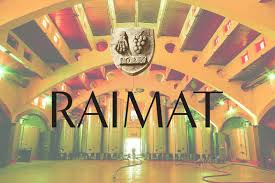 .CURIOSITIES: Other names for white Garnacha grapes: grenache, grenache blanc, alicante blanca, silina lanc, belán, rool grenache, garnatxa blanca, feher grenache, etc. Antithesis of wines with Atlantic character, the white Grenache is an icon of white wines with Mediterranean character. The extraordinary characteristics of white Grenache such as low acidity compensating alcohol, the balance in the oxidative nuances so complex to elaborate and its late maturity despite the heat, makes it a variety that will not leave impassive anyone enjoying it. White Grenache is believed to originate from a mutation of the Spanish Red Grenache. It then travelled through the Pyrenees to France, finding a second home in the Rhone. I won't discuss where exactly the white Grenache (Alicante, Aragon or Catalonia) comes from, nevertheless, I can say is a variety native to Spain and that it is currently considered one of the most reputed in the wine panorama. 1918 • THE CATHEDRAL OF WINE Work of the architect and disciple of Gaudí, Joan Rubió and Bellver, the Raimat winery was the first reinforced concrete building built in Spain. Its harmonious structure of arches and the atmosphere that was created inside gave it the qualification of “wine cathedral” Raimat is the result of a family's dream that, more than a century ago, decided to give life to lands that were considered an inert desert. Its history dates back to 1914, when Manuel Raventós i Doménech, owner of Codorníu, acquired arid and infertile lands and turned them into a sea of vineyards. More than 100 kilometres of ditches were built to bring the water from the Canal de Aragón to the farm, and make desert lands fertile again. In addition, the family also built the first and only wine colony in Europe: more than 100 houses for workers and their families, warehouses, a church, a school ... all the infrastructure necessary to give life to an area that, until then, only housed an old Middle Ages castle in ruins, which is currently the heritage of the winery. The stone engraved shield that crosses the access door to the quarterdeck was adopted as a mark of the brand and appears on the label of all the bottles. It is thought that the engraving can explain the origin of the name Raimat since it contains a bunch of grapes (raïm, in Catalan) and a hand (ma, in Catalan), we also know that in the surroundings of the castle vineyards were formerly cultivated. 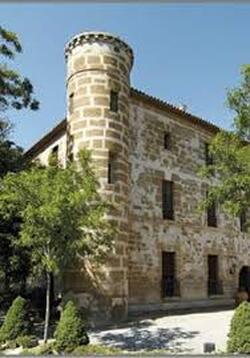 In 1986 Raimat promoted the creation of a new Denomination of Origin, Costers del Segre. A designation of origin whose wines have very particular characteristics, being a designation of origin with an interior character and far from the sea. After the creation of the D.O. novelties in Raimat continue with the construction of the new winery ... A spectacular pyramid work built in the heart of the farm's hills. For its construction it was necessary to remove tons of soil, as the aging warehouses are located inside these hills, thus achieving a perfect integration of the winery with the landscape. One of the winery's vineyards of the Cabernet Sauvignon variety is planted on the land that covers the facilities. We'll have to try it too! 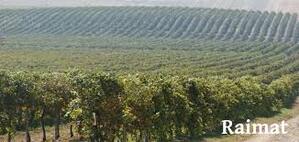 El viento ha encontrado en Bodegas Raimat un hogar. Presente durante todas las estaciones del año, es un elemento muy característico de nuestra finca. “El viento siempre irradia carácter, no importa desde donde sople, ni hacia dónde camina. Siempre transmite su fuerza a todo eso que toca”. ¿Por qué Ventada? Ventada significa: Golpe de viento El nombre de este vino es un homenaje a su paso constante por las viñas. Si buscas respuestas en Raimat, sin duda las encontrarás en el viento. La bodega RAIMAT ha decidido reinventar la manera de entender y elegir un vino, poniendo en el centro de la cadena de valor su relación con el consumidor. Por primera vez en la historia, la bodega clasifica todos sus vinos en función de su intensidad. El objetivo es ayudar a acertar en la elección de un vino y en la identificación de los gustos propios y maridajes más adecuados. Otra de las grandes novedades que presenta Raimat es la conversión de todo su viñedo de sostenible a ecológico. El respecto por el medio ambiente y la naturaleza es un común denominador de esta bodega de Costers del Segre en sus más de 100 años de historia. Raimat fue pionero en prácticas de viticultura sostenible. Fue la primera bodega en introducir cubiertas vegetales para reducir la erosión del suelo, en utilizar la técnica de riego por gravedad para ahorrar más energía, el control de plagas natural o la viticultura de precisión.  -Aspecto: Color amarillo pálido casi beige, recuerda a esa carne de pera madura… -Nariz: Muy limpio, exuberante y con ese aroma de hueso de albaricoque…Su corcho ya promete calidad. -Paladar: Vino con plenitud, seco, poca acidez, bastante largo y perfumado de fruta y regaliz… Podría decir que son de esos vinos que tienen un alma blanca. Lo acompañamos con un solomillo de pavo y patatas cocotte, con sus especias: tomillo, pimienta, nuez moscada y ras al hanout. Y musicalmente elegí en honor al viento, un tema de Madredeus y su albúm O Paraiso, “ A Tempestade”. La primavera en Raimat fue más fría y húmeda de lo habitual, y ello supuso un retraso en el ciclo de la vid . Por otra parte, el verano fue caluroso y seco. Esto propició una maduración progresiva y óptima. Durante la maduración de las uvas blancas cayeron algunas precipitaciones que retrasaron la vendimia, así que hubo que esperar hasta alcanzar buenos niveles de maduración. La espera valió la pena. CURIOSIDADES: Otros nombres para uva garnacha blanca: grenache, grenache blanc, alicante blanca, sillina lanc, belán, rool grenache, garnatxa blanca, feher grenache, etc. Antítesis de los vinos con carácter atlántico, la garnacha blanca es icono en los vinos blancos con carácter Mediterráneo. Las extraordinarias características propias de la garnacha blanca como la baja acidez que le confieren esta compensación con el alcohol, el equilibrio en los matices oxidativos tan complejos a la hora de su elaboración y su madurez tardía a pesar del calor, hacen de ella una variedad que no deja impasible a quien la disfruta. Se cree que la garnacha blanca es originaria de una mutación de la garnacha tinta española. Luego fue a través de los Pirineos hacia Francia, encontrando un segundo hogar en el Ródano. Sin entrar en el debate de donde proviene exactamente la garnacha blanca (Alicante, Aragón o Cataluña) lo que sí puedo decir es que es una variedad autóctona de España y que actualmente está considerada una de las más cool del panorama vitivinícola. 1918 · LA CATEDRAL DEL VINO Obra del arquitecto y discípulo de Gaudí, Joan Rubió y Bellver, la bodega de Raimat supuso el primer edificio de hormigón armado construido en España. Su armoniosa estructura de arcadas y la atmósfera que se creaba en su interior le otorgaron el calificativo de “catedral del vino”. Raimat es el resultado del sueño de una familia que, hace más de un siglo, decidió dar vida a unas tierras que eran consideradas un desierto inerte. Su historia se remonta a 1914, cuando Manuel Raventós i Doménech, propietario de Codorníu, adquiere unas tierras áridas e infértiles y las convierte en un mar de viñedos. Se construyeron entonces más de 100 kilómetros de acequias para llevar el agua del Canal de Aragón hasta la finca, y conseguir así que aquellas desérticas tierras volvieran a ser fértiles. Además, la familia construyó también la primera y única colonia vitivinícola de Europa: más de 100 casas para los trabajadores y sus familias, almacenes, una iglesia, una escuela… todas las infraestructuras necesarias para dar vida a una zona que, hasta entonces, tan solo albergaba un viejo castillo en ruinas, originario de la Edad Media, y que actualmente es patrimonio de la bodega. El escudo grabado en piedra que franquea la puerta de acceso al alcázar fue adoptado como distintivo de la marca y figura en la etiqueta de todas las botellas. Se piensa que el grabado puede explicar el origen del nombre Raimat puesto que en él aparecen un racimo de uva (raïm, en catalán) y una mano (ma, en catalán), además de saberse que en los alrededores del castillo antiguamente se cultivó viñedo. En 1986 Raimat impulsa la creación de una nueva Denominación de Origen, Costers del Segre. Una denominación de origen cuyos vinos tienen unas características muy particulares, al ser una denominación de origen de carácter interior y alejada del mar.
Después de la creación de la D.O. se siguen las novedades en Raimat con la construcción de la nueva bodega... Una espectacular obra piramidal construida en el corazón de las colinas de la finca. Para su construcción fue necesario remover toneladas de tierra, ya que las naves de crianza se encuentran en el interior de estas colinas, consiguiendo así una perfecta integración de la bodega con el paisaje. Sobre la tierra que cubre las instalaciones se encuentra plantado uno de los viñedos de la bodega, concretamente uno de la variedad Cabernet Sauvignon. Habrá que probarlo también!!  Es la representación juvenil de los tintos ecológicos más complejos de esta bodega del Penedés. Elaborado con la variedad Merlot 60%, y un porcentaje, 40% de Petit Verdot. Vino de Autor. Fermentación a temperatura controlada en barrica de acero inoxidable durante 15 días. Crianza de 2 meses en barrica de roble. Crianza posterior en botella. El número 3055 representa la licencia de taxista de Jean Leon en Nueva York, uno de sus primeros trabajos, y nos descubre el humilde origen de este idealista santanderino que logró alcanzar su sueño de fundar el restaurante más famoso de Hollywood y elaborar un vino con su nombre. En la actualidad, la bodega pertenece a la familia Torres y la dirige con determinación Mireia Torres, asistida por el enólogo Xavier Rubires, con el férreo compromiso de elaborar los grandes vinos que a Jean Leon le hubiera gustado concebir. Este vino destaca por su frescor, sofisticación y marcada identidad. Para disfrutar ahora o dentro de dos o tres años. VISTA Color rojo intenso con ribetes amoratados. De elevada capa y densidad. NARIZ Fresas, melocotón, plátano, pimienta negra y cuero… PALADAR Entrada golosa y postgusto embriagador. Lo acompañé con un risotto de berenjena y setas Portobello, finalizando con un queso de oveja con pimentón picante, que dio lugar a un mayor regusto de verdor y tierra. Para su maridaje musical, elegí a Joséphine Baker y su mítico tema “De temps en temps”. Glamour y carácter. Los vinos elaborados con Petit Verdot suelen tener un sabor complejo, en este caso al añadir uva Merlot da un vino completo y redondo. Curiosa mezcla esta... Usualmente se ensambla con Cabernet Sauvignon. CURIOSIDADES de Jean Leon El vino de autor ‘Jean Leon’ es la culminación de la vida de un hombre, un hombre cuya apasionante biografía empieza en 1928. Jean Leon nació en Santander, en el norte de España y su verdadero nombre era Ceferino Carrión. Para Jean Leon era necesario encontrar la mejor tierra y clima junto con… La génesis de esta bodega es la historia del coraje de Ceferino Carrión, un español que emigró a los 19 años a Estados Unidos y trabajó a finales de la década de 1940 como camarero en el restaurante Villa Capri, en Hollywood, propiedad de Frank Sinatra. Allí hizo amistad con famosos actores, especialmente James Dean, con quien fundó el restaurante más lujoso de Hollywood: La Scala, que en poco tiempo se convirtió en lugar de reunión de personajes célebres, desde Marilyn Monroe y John F. Kennedy, hasta Zsa Zsa Gabor o Paul Newman, entre otros. Una vez conseguida la gloria, Ceferino —que por entonces ya había cambiado su nombre a Jean Leon— se propuso llevar a cabo otro sueño: elaborar un vino para la selecta clientela de su restaurante. Con ese propósito, viajó por todo el mundo hasta encontrar finalmente el lugar ideal: el Penedès, en Cataluña.  Con James Dean ,,Jean Leon forjó una gran amistad, hasta tal punto que se propusieron asociarse para materializar un sueño que ambos compartían: crear el restaurante más prestigioso de Hollywood. Dean, que por aquel entonces trabajaba para la Warner y ya había protagonizado películas como ‘Rebelde sin causa’ o ‘Gigante’, estaba en una buena situación económica, así que él invertiría el dinero necesario para abrir el restaurante (unos 10.000 o 20.000 dólares) y Jean Leon estaría al frente del restaurante. Jean Leon ya había encontrado el local perfecto para abrir el nuevo restaurante, ubicado justo enfrente del Villa Capri. Jean Leon mantenía una estrecha amistad con Marilyn Monroe, a quien conocía desde su época como camarero en Villa Capri, entre otras porque la actriz había estado casada con Joe DiMaggio, propietario del restaurante junto a Frank Sinatra. Después fue clienta recurrente de su restaurante La Scala, hasta tal punto que Jean Leon le había dedicado un plato de la carta, los ‘Fetuccini a lo Marilyn’, por tratarse de uno de sus platos preferidos. La noche del 4 de agosto Marilyn le pide a Jean Leon, su restaurador predilecto, que le lleve en persona un plato de pasta a domicilio, a su casa de Brentwood, en Hollywwod. Pocas horas después la actriz fallece, según la versión oficial, tras haber ingerido altas dosis de antidepresivos. Al ser una de las últimas personas que la vió con vida, Jean Leon fue interrogado como testigo. Años después, según reconoció en el libro ‘El Rey de Beverly Hills’, Marilyn esa noche no estaba sola sino con Robert Kennedy ,con quien se sabía, ‘extraoficialmente’, que mantenía una relación. Jean Leon, insatisfecho con el vino que servían en su restaurante, decidió elaborarlo él mismo. Después de un viaje a Francia y España, en 1963 compró 150 hectáreas en Torrelavit, Alto Penedés. Arrancó las cepas y las reemplazó por cabernet sauvignon, merlot y chardonnay, entonces desconocidas en la comarca. Delegó en el enólogo Jaume Rovira la elaboración de unos caldos que destacan por su fuerte personalidad.  MY ENCOUNTERS WITH WINE by Irene Sayas JEAN LEON 3055 MERLOT & PETIT VERDOT 2017 It is the youth representation of the most complex ecological reds from this Penedés winery. Made with the Merlot variety 60%, and a percentage, 40% of Petit Verdot. A limited release brand. Fermentation at controlled temperature in stainless steel barrels for 15 days. Aged for 2 months in oak barrels. Later aging in bottle. Number 3055 represents Jean Leon’s taxi driver license in New York, one of his first works, and reveals the humble origin of this Santander idealist ,who managed to achieve his dream of founding the most famous restaurant in Hollywood and making a wine with his name. Currently, the winery belongs to the Torres family and is managed with determination by Mireia Torres, assisted by winemaker Xavier Rubires, with the commitment to make the great wines that Jean Leon would have liked to conceive.  datorio de privaidad de This wine stands out for its freshness, sophistication and strong identity. To drink now or over the next two or three years. VIEW Intense red colour with purple edges. High colour depth and density . NOSE Strawberries, peaches, bananas, black pepper and leather ... PALATE Sweet entry and intoxicating aftertaste. I accompanied it with an aubergine and Portobello mushroom risotto, finishing with a cured sheep cheese with spicy paprika, which gave rise to a greater aftertaste of greenery and earth. For his musical pairing, I chose Joséphine Baker and his mythical song “De temps en temps”. Glamor and character. The wines made with Petit Verdot tend to have a complex flavor, in this case when adding Merlot grape it gives a complete and round wine. Curious mix this ... Usually it is assembled with Cabernet Sauvignon. CURIOSITIES: “The author's wine” Jean Leon is the culmination of a man's life, a man whose fascinating biography begins in 1928. Jean Leon was born in Santander, in the north of Spain and his real name was Ceferino Carrión. For Jean Leon it was necessary to find the best land and climate together with... The genesis of this winery is the story of the courage of Ceferino Carrión, a spanish who emigrated to the United States at age 19 and worked as a waiter in the Villa Capri restaurant in Hollywood, owned by Frank Sinatra, in the late 1940s. There he made friends with famous actors, especially James Dean, with whom he founded the most luxurious restaurant in Hollywood: La Scala, which in a short time became a meeting place for famous people, from Marilyn Monroe and John F. Kennedy, to Zsa Zsa Gabor or Paul Newman, among others. Once glory was achieved, Ceferino - who by then had already changed his name to Jean Leon - set out to fulfill another dream: to make a wine for the select clientele of his restaurant. With that purpose, he traveled around the world until finally finding the ideal place: El Penedès, in Catalonia. With James Dean ,Jean Leon forged a great friendship, to such an extent that they decided to partner to materialize a dream that they both shared: create the most prestigious restaurant in Hollywood. Dean, who was working for the Warner at the time and had already starred in films like 'Rebel Without a Cause' or 'Giant', was in a good financial situation, so he would invest the money necessary for the restaurant (about $ 10,000 or $ 20,000) ) and Jean Leon would be in front of the restaurant. Jean Leon had already found the perfect place to open the new restaurant, located just opposite Villa Capri. Jean Leon had a close friendship with Marilyn Monroe, whom he had known since his time as a waiter in Villa Capri, among others because the actress had been married to Joe DiMaggio, owner of the restaurant along with Frank Sinatra. Later, she was a recurring client of her restaurant La Scala, to such an extent that Jean Leon had dedicated a menu item, the ‘ Marilyn Fetuccini’, as it was one of her favorite dishes. On the night of August 4, Marilyn asks Jean Leon, her favorite restaurateur, to bring her a plate of pasta in person to her home in Brentwood, Hollywwod. A few hours later the actress dies, according to the official version, after having ingested high doses of antidepressants. As one of the last people to see her alive, Jean Leon was questioned as a witness. Years later, as she recognized in the book ‘The King of Beverly Hills’, Marilyn that night was not alone but with Robert Kennedy, with whom it was known, ‘unofficially’, that she had a relationship. 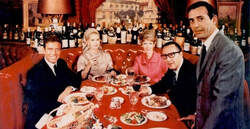 Jean Leon, dissatisfied with the wine they served at his restaurant, decided to make it himself. After a trip to France and Spain, in 1963 he bought 150 hectares in Torrelavit, Alto Penedés. He uprooted the vines and replaced them with cabernet sauvignon, merlot and chardonnay, then unknown in the region. The winemaker Jaume Rovira delegated the elaboration of wines that stand out for their strong personality.  BLAU Red wine Roble. 4 months in French oak barrels. Variety: Syrah, Cariñena, Garnacha Tinta D.O. Montsant El Molar-Tarragona_ Cellers Can Blau Winery. Juan Gil Family Wineries. Cellers Can Blau de Montsant winery is part of one of the seven wineries that belong to the Orowines group. Characterizing like the rest, of own wineries and vineyards where what they want to show is the personality of each of the areas they represent through their vineyards. Montsant, name of mountain range and natural park, with its old vines between 200 and 700 meters above sea level. This wine is a mixture of grapes planted in different types of soils that adapt to each variety and a great diversity is obtained. On the one hand we have Cariñena (50%) planted on clay soils, Syrah (25%) planted on limestone soils and Garnacha (25%) planted on metamorphic rock soils known as licorella. The climate in this area is Mediterranean but with a certain continentality. The mountains act as a natural barrier to maritime influence, which causes a great thermal oscillation between day and night. In general, winters are cold and summers are dry and hot. 
There are many ways to define a wine. There are those who appeal to the senses and there are those who assure that each wine is the result of the sum of the variety, the human factor and the territory that is marked by climate and land, and in this case, it is noticeable. An original and seductive wine that glides through the senses with character but without aggressiveness. And with a potential to enjoy it now or in one or two years. OBSERVATIONS AND CURIOSITIES: Montsant is a denomination located in the province of Tarragona, enveloping the denomination of Priorat. It is a denomination of young origin, although it is located in a land with a long history of winemaking tradition. One of the questions that most frequently revolves around an issue that has been generating an interesting debate for years: What is the main difference between Montsant and Priorat wines? Mainly red wines made with Garnacha and Cariñena, they are sincere, wild and artisan wines. With a very good relationship between its great quality / price and its old, velvety red strains are the common hallmarks. On the other hand, while the slate soils predominate in the Priorat, and are partly responsible for the enormous worldwide fame that these wines have harvested for their unique minerality, in the D.O Montsant the argilas and calcareous terrains predominate. Another important aspect to consider is the rainfall, somewhat higher in the D.O Montsant, as well as the yields of the strains, also slightly higher in that area. For this reason, Montsant wines could be defined, always in general terms, as somewhat fresher and with a more marked fruit background than those of the D.O Priorat, more concentrated and mineral. From Priorato to Montsant and vice versa / Phylloxera and cooperativism. The cooperative movement emerged at the beginning of the last century. It was born in response to the need for survival, when the phylloxera plague ended a large part of the vineyards. In this situation, cooperativism was one of the few alternatives to move forward. The proximity of both areas encourages sharing and exchanging experiences. Many of the Priorato processors have bought farms and built warehouses in the D.O. Montsant. Wines to discover.
Montsant is considered by the specialized press as a rising value, and prestigious media such as "The Wine Spectator" do not hesitate to describe it as "a great discovery." In this sense the quality of its wines is key but also its balanced value for money. The prestigious Spanish wine guide "Guia Peñin" states "the quality of Montsant wines and their good price make this region an excellent alternative." |
irene sayasEntusiasta y conocedora de la magia del vino. El vino evoca, convoca y provoca... *Archivos:
|
Cómo contactarnos / How to contact usTeléfono 690 073 871 |
Suscribirse / SubscribeÚnete a nuestra lista de correo hoy!
Sign up to our mailing list now! |

